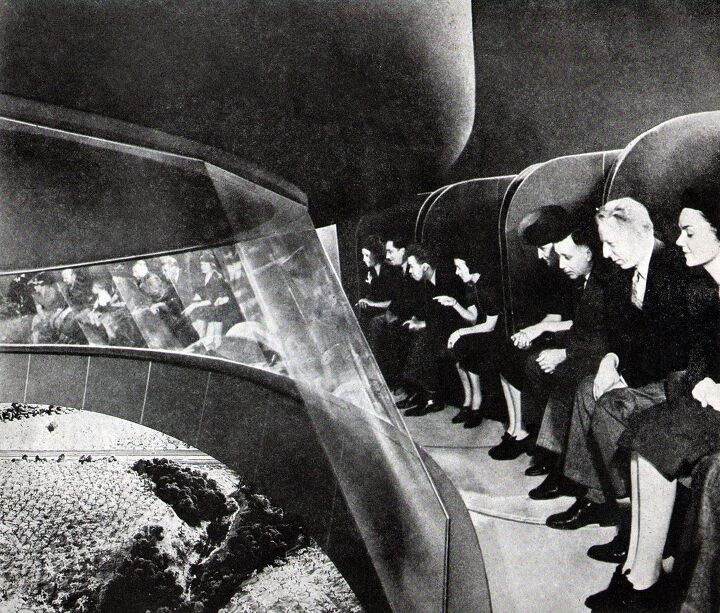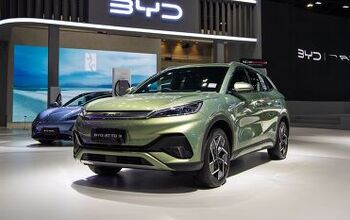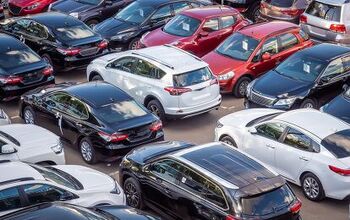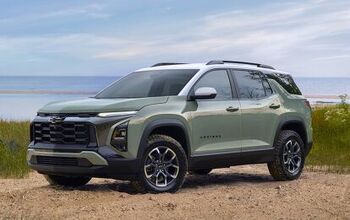Autonomy and the 1939 World's Fair

It’s safe to assume that when the doors to the New York World’s Fair flew open 75 years ago to the day, the American public had few expectations about the future of autonomous personal transport. To be fair, they weren’t exactly sold on the whole highway thing yet either. Sure, several New Deal agencies like the WPA and CCC had successfully modernized countless local roads and a handful of major throughways, but the ubiquitous twists of freeway that would come to define the modern North American landscape were two decades and a word war away.
That said, autonomy and highways go hand in hand.
As banal as it seems to us, the concept of free-flowing traffic was a major shift, not only to the transportation paradigm, but also to the subjective perception of time and distance. Prior to the 1939 World’s Fair the concept of an interstate system was not new, but one couldn’t expect the American public to be up to date on the latest developments in theoretical civil design.
Industrial designer Bel Geddes and General Motors changed all that with their revolutionary Futurama exhibit. Futurama was a ride, a journey of scale that started with a macroscopic view of the landscape of tomorrow and gently resolved to life size. The ride ended with a display of GM’s latest offerings, naturally —but along the way viewers were privy to a startlingly accurate “prediction” of what was to come for the American road system. The one element that didn’t immediately come to fruition in the decade following the war was the “automated highway”. It isn’t clear how Geddes or GM envisioned the system working but it’s crucial to our understanding of the nascent autonomous car industry that the concept of a freeway and a car that drives itself were born hand in hand.
During an interview with our friends at Hooniverse former GM honcho Bob Lutz made it quite clear that he believes the future of individual transport to be autonomous cars. While legions of boy racers and nostalgists cry out in horror it’s important to keep a cool head and remember that we’ve always been there. Highways have been autonomous since day one, not because they control our car, but because they eliminate the landscape and along with it the need to make decisions based on our immediate surroundings. A car that controls lane departure, cruising speed, and distance between other cars isn’t autonomy, it’s just details.

More by Abraham Drimmer
Latest Car Reviews
Read moreLatest Product Reviews
Read moreRecent Comments
- Lou_BC Well, I'd be impressed if this was in a ZR2. LOL
- Lou_BC This is my shocked face 😲 Hope formatting doesn't fook this up LOL
- Lou_BC Junior? Would that be a Beta Romeo?
- Lou_BC Gotta fix that formatting problem. What a pile of bullsh!t. Are longer posts costing TTAC money? FOOK
- Lou_BC 1.Honda: 6,334,825 vehicles potentially affected2.Ford: 6,152,6143.Kia America: 3,110,4474.Chrysler: 2,732,3985.General Motors: 2,021,0336.Nissan North America: 1,804,4437.Mercedes-Benz USA: 478,1738.Volkswagen Group of America: 453,7639.BMW of North America: 340,24910.Daimler Trucks North America: 261,959


































Comments
Join the conversation
39 Autonomy brought about America's dependence on foreign oil and was probably about where the home computer is now with relation to the Internet. Domestic precious metals please. Let's recycle those catalytic converters.
I wondered about upcoming worlds fairs, so I checked on Wikipedia. Expo 2015 will be held in Milan, Italy. Expo 2017 will be held in Astana, Kazakhstan.